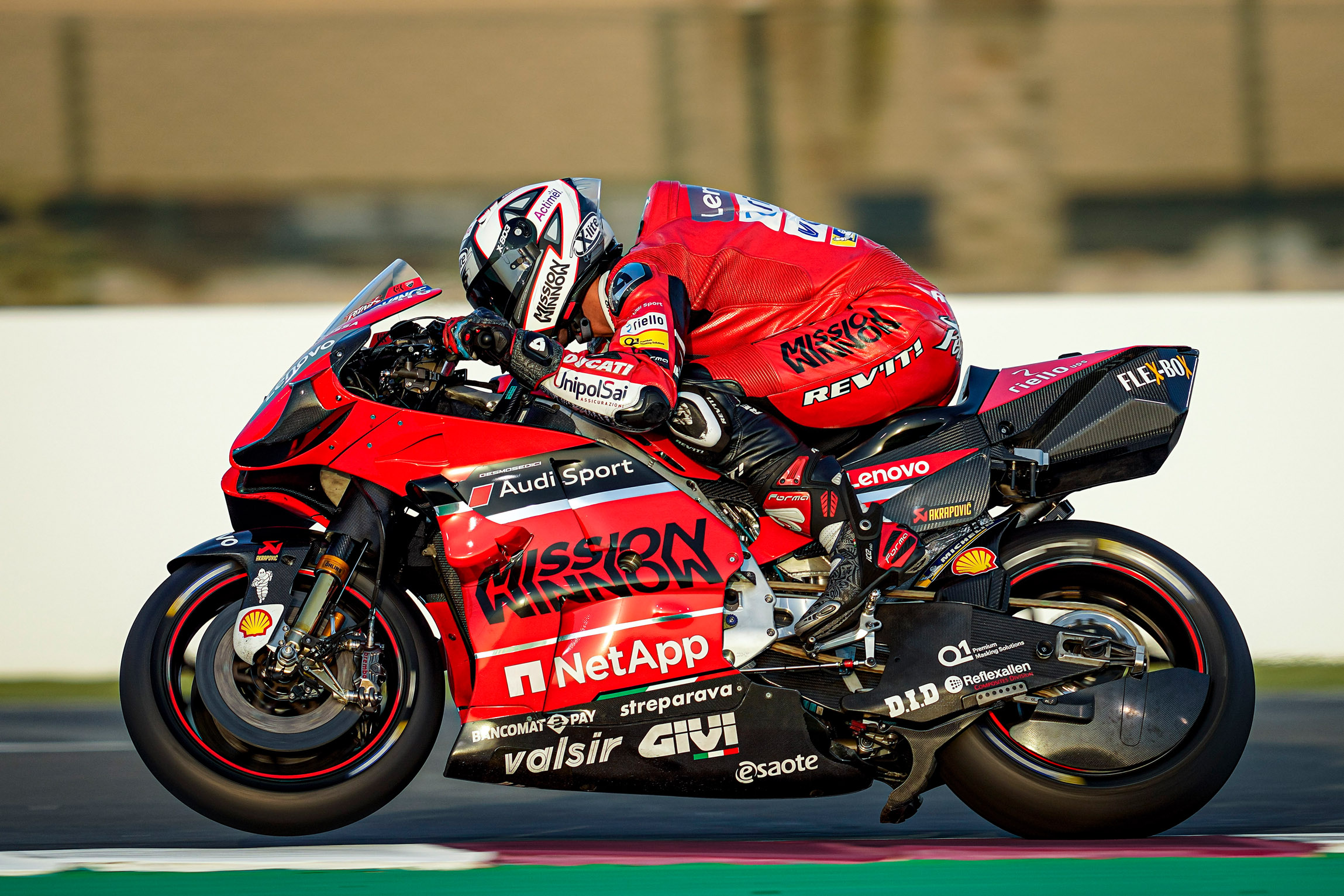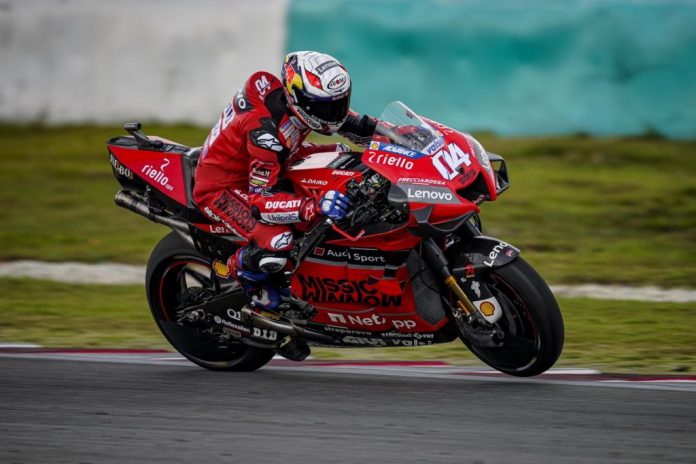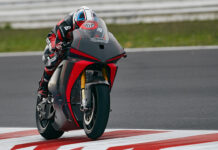Journalist and rider Mat Oxley has made the bold proposal that Ducati’s rumored variable ride height system in MotoGP “…lowers the entire motorcycle to reduce wheelies and therefore improve acceleration” (Motor Sport magazine).
Page 111 of FIM World Championship Grand Prix Regulations forbids use of an automatic system, as follows:
“2.4.4.4 Suspension and Dampers
“Electric/electronic controlled suspension, ride height and steering damper systems are not allowed. Adjustments to the suspension and steering damper systems may only be made by manual human inputs and mechanical/hydraulic adjusters.”
Elsewhere, the FIM forbids use of engine oil for any purpose other than lubrication or cooling, so it can’t be used to control suspension. But suspension damping is provided by pumping damper oil through orifices, and the ZF/Sachs Nivomat and similar suspension units from other makers have used suspension motion to pump that oil for another purpose: providing constant vehicle ride height regardless of load. In the 1950s, Guzzi racing engineer Giulio Carcano used suspension motion to pump fuel up from a low-mounted tank to supply the carburetor of his 350 single GP bike. Provided that control comes only from “manual human inputs,” it would appear that energy generated in this way can be used in any desired way. Further, Ducati claims the legality of what it is doing has been cleared with MotoGP tech director Danny Aldridge.
In order to conform to the above, Oxley proposes that Ducati is using an “…auxiliary hydraulic unit working in parallel with the shock.”
In other words, the very same energy source used in Nivomat. It used normal suspension motion to operate a hydraulic pump that could restore normal ride height despite the addition of a passenger or luggage. Many other automakers have offered similar systems. The trade name “Nivomat” combines the French “NIVeau” (level) and “autOMATique.”
Such a system could pump oil into a small gas-charged accumulator to provide a source of hydraulic power that could be used in any manner that comes to the imagination of Ducati race boss Gianluigi Dall’Igna.

In Ducati’s application, two ride heights are required: A lower one to allow the vehicle to accelerate or brake harder before lifting a wheel, and a higher one to provide the ground clearance necessary for cornering. During the recent MotoGP test at Qatar, it was revealed that operating the system requires the rider to tap “high” or “low” buttons located on the left handlebar—something that takes time to incorporate into one’s workload.
Remember that present anti-wheelie systems do not increase acceleration. They just prevent the waste of time that can occur when the front pops up faster than the rider can counter it. And they operate by reducing engine torque to let the front tire return to the maximum acceleration position—just above the pavement. Reducing ride height allows the bike to accelerate harder before wheel lift occurs (this is why dragbikes are built so low).
Notionally, using Ducati’s system, as soon as the bike has lifted from full lean, the rider taps “low” and the bike settles to its lower ride height, enhancing acceleration. As the next corner is approached and peak braking has passed, the rider taps “high” and the system raises the bike so that parts cannot ground during operation at full lean angle.
read more here













